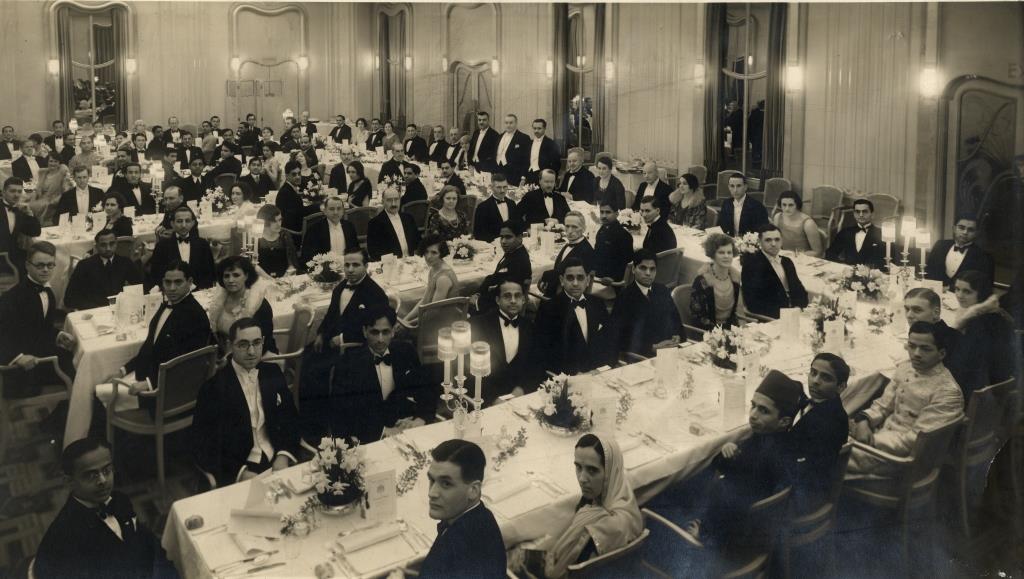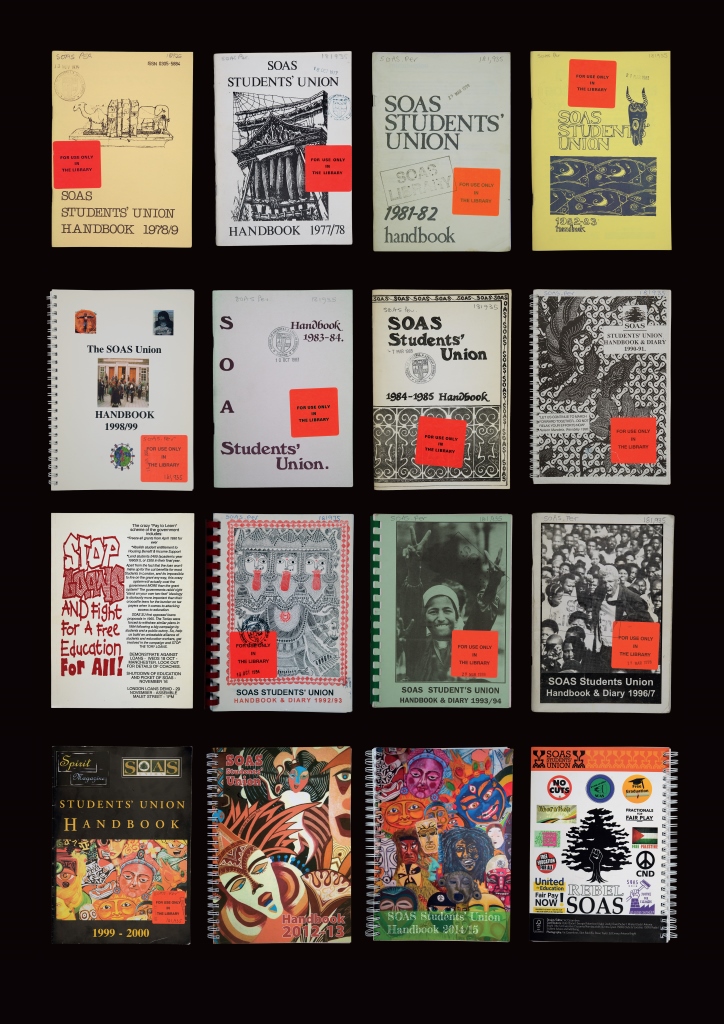Academics, Agents and Activists: A history of the School of Oriental and African Studies, 1916-2016
John Hollingworth, Gallery Manager and co-curator of ‘Academics, Agents & Activists: a history of the School of Oriental and African Studies, 1916-2016’, continues his overview of this fascinating centenary exhibition, which has been on display at the Brunei Gallery. The exhibition showcased material from the incredibly rich archive collections at SOAS – both the School’s own institutional archive and material held by Archives & Special Collections, SOAS Library. This week, we look at the history of the SOAS Students’ Union.
A Union for Students
The School of Oriental Studies Union Society was formed in 1927 with all students admitted and staff also eligible for membership. The School’s Director was the first president. The membership fee was ½ crown (2s 6d), which would be the equivalent of £30 today.
The Union’s early activities and events included organising lectures and debates and an annual dinner held at the Savoy Hotel usually with guests of honour, and including a musical performance.
In 1935 ‘The Magazine of the Students Union’, edited anonymously by ‘A Student’, was published. Mr. A. A. Puri was elected President and Miss A K S (Nancy) Lampton, Union Secretary, organised a series of talks to take place after the weekly Tea Party on Tuesdays.
Sporting activities were popular and in 1943, ‘the state scholars maintained a rugby team, and students from the services a “Soccer” side, the squash courts opened and two cricket elevens and an athletics team were maintained’. The fortnightly teas were discontinued due to the restrictions of war, though they still held debates, lectures, play readings and weekly lunch time gramophone recitals. A religious discussion group began and early fundraising was carried out for the International Students Service to provide materials for prisoners of war, supplemented by proceeds of an end of term dance held at the Royal Hotel.
In 1945 the SOAS SU produced its first written constitution and a new student magazine, ‘The Mallett Magazine’. Membership fees increased to ten shillings by 1953.
In 1957, following the Soviet invasion of Hungary, the SOAS Students’ Union was divided ideologically but made an admirable fund raising effort to help support the Hungarian refugees. In September of that year the Union took the decision that Jailhouse Rock was not to be played in the common room, as Elvis was ‘a fad which will never take off’. The ban was lifted two years later.
In 1959 the Union raised money for the Algerian victims of the National Liberation war against France. At the same time it was one of the first institutions to instigate a boycott on South African goods. The social conscience of the Union is a common thread which runs through its entire history.
Student activism and the counter culture of the 1960s was embraced by the SOAS Union before many other student unions. In 1964 the first SOAS Union Handbook was published. In the same year the government discussed introducing a system of student loans, which the Union rejected and campaigned successfully against.
In 1968 while student protests took place across Europe, SOAS raised the price of the tea by 1d and the coffee by 2d and the Union voted overwhelmingly to boycott all catering services. The price increase was overturned. Within the Union a vote was passed to support the Black Panthers campaign in the US. A year later SOAS disaffiliated from the National Union of Students (NUS) who claimed it was “too reactionary”.
In 1970 the college bar opened and in 1971 bands such as the Velvet Underground played at SOAS. In 1971-72, the Union treasurer was caught embezzling funds and subsequently was sent to prison. This paved the way for the first Sabbatical President of the Union in 1972-73, a full time President who would be responsible for overseeing all the Union’s activities and be accountable.
Throughout the 1960s and 1970s there were numerous SOAS student magazines including ‘Bosch’, ‘Feudalist Worker’, ‘Arspapa’, and ‘The Thornhaugh Street Gazette’. In 1974, the Union gained representation on the School’s Academic Board.
The 1970s saw the Union become increasingly politically active. In 1977 the new government regulations quadrupling overseas fees hit SOAS particularly hard with the School Director (Philip Cowan) attending an NUS protest demo against the hike in fees. Despite the unusual consensus between School and Union, the government plans went ahead.
In 1978 the Union got its new common room and the bar moved to its present location. The early eighties were a relatively quiet period for the Union, due to many of the new educational policies in place. In the mid 1980’s overspending on entertainment bankrupted the Union, the President resigns over this.
From the late 1970s to the 1990s, the SOAS SU Bar was an established music venue. SOAS became known as the venue for both old and new music, such as Mudhoney and Soundgarden who played a double bill in 1989 and later that year Nirvana, who played their first UK gig at SOAS.
The nineties showed an increase in Union activity in general and in 1991, after gaining a third member of staff, ‘Spirit’ magazine was started and during the Gulf War a helpline was set up for victimised Arab students.
A Library Occupation in 1993 over book shortages and library fines was ended when the School provided funds to buy new books and removed the fining system, which was reinstated three years later. In 1997 another Library occupation took place over the non-provision of library tickets to Senate House Library. A compromise was reached with the School providing the tickets demanded.
In 1994 SOAS banned the Islamic fundamentalist group Hizb ut-Tahrir. The Union rejected this ban, falling out with the NUS and ULU. The rest of the University of London unions’ stance convinced them to withdraw their support.
‘The Spirit’ magazine was renamed ‘The New Spirit’, becoming ‘The Spirit’ paper in the early 2000s, and then ‘SOAS Spirit’, which is the current student paper.
The 2000s were characterised by disputes and occupations with the Union actively involved in national protests including against tuition fees, austerity and education cuts, and challenging the School over relevant policies, resources and practices. Following a School wide referendum SOAS becomes the first English University to divest in Fossil Fuels supported by the Union.
After 90 years the Union continues to provide a proactive and diverse environment which offers support and representation for all SOAS students and has three sabbatical co-presidents who work full time, attending School committees and lobbying management on issues raised directly by students.




